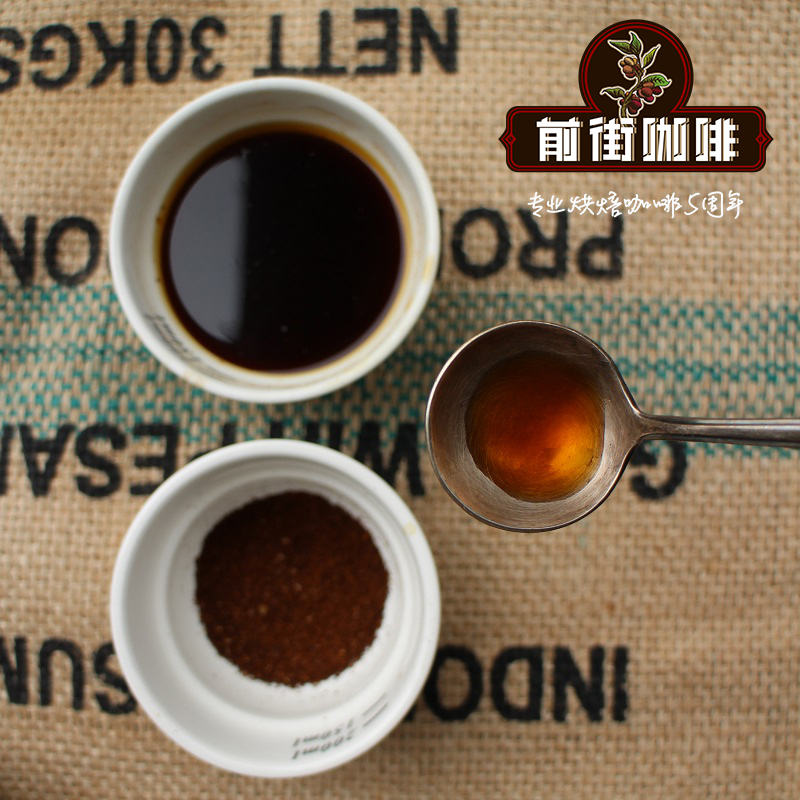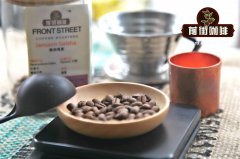Honduran boutique coffee introduces the special flavor and taste of Shirley and litchi blue coffee beans.

Professional coffee knowledge exchange more coffee bean information please follow the coffee workshop (Wechat official account cafe_style)
As early as 500 years ago, as an important Tibica in Arabica coffee in the world, it spread from Yemen to India, then from India to Indonesia, and then from Indonesia to the Netherlands. After several turns, it spread to the whole America.
Before 1940, Tibica was widely planted in America, but because of its low yield and serious diseases and insect pests, it was gradually replaced by bourbon variety. at present, there are not too many Tibica species.
"Litchi Orchid" is a rare high-quality Tibica variety, excellent genes will bring a unique flavor, this is the inheritance of the characteristics of the variety.
In "Litchi Orchid", the wonderful acidity and sweetness are intertwined and balanced, and the coffee can be described as "quality balance". At the same time, you can also taste the rich aroma of wine (brandy).
Mixed with lychee, honey, melon and chocolate, the finish is long and round.
Honduras is located in the north of Central America, facing the Caribbean Sea to the north, the Gulf of Fonseca in the Pacific Ocean to the south, Nicaragua and El Salvador to the east and south, and Guatemala to the west, mostly mountains and plateaus. It has a tropical climate, mild temperature and abundant rainfall, so it is an ideal place for coffee growth.
Twenty years ago in Honduras, almost none of the items such as attention to details, environmental maintenance around the disposal site, investment in treatment equipment, export procedures, logistics and transportation of raw beans could compete with neighboring countries. The quality of raw beans was naturally coarse but not meticulous, and only a few manors or CoE winning batches could be called high-quality products. Since 2007, the situation has improved. Under the leadership of the IHCAFE Coffee Bureau and many far-sighted dry processing plants, Honduras has gradually achieved results in the improvement of the treatment process and the investment in raw bean processing equipment and transportation exports. even though the international market is still low-profile, active bean bakers have invested in Hongguo coffee-producing areas in an attempt to dig out high-quality products. In terms of output, from 2011 to 2012, Honduran coffee even occupies the leading position in Central America, harvesting about 3 million bags (46kg) of coffee every year. In addition to the volume, IHCAFE and the production association and processing plant that are interested in carrying out a series of projects, hoping to provide international buyers with high quality and delicious Honduran coffee.
Honduran coffee has a rich and mellow taste, taste is not astringent, not sour, mellow and aroma are very high, quite personality. Honduran coffee can lead to multiple levels of flavor depending on the degree of roasting.
Litchi orchid
Country: Honduras
Producing area: Masaguara
Manor: Moca Manor
Altitude: 1500-1700m
Treatment: brandy barrel fermentation
Important Notice :
前街咖啡 FrontStreet Coffee has moved to new addredd:
FrontStreet Coffee Address: 315,Donghua East Road,GuangZhou
Tel:020 38364473
- Prev

Flavor characteristics of litchi orchid coffee bean brandy barrel story of Moca Coffee Manor in Honduras
For more information on coffee beans, please follow the Coffee Workshop (official Wechat account cafe_style) Honduras is a mountainous country in Central America, located between the Pacific Ocean and the Caribbean, bordering Guatemala, El Salvador and Nicaragua. Belongs to the tropical climate, the annual average temperature is 23 ℃. With abundant rainfall throughout the year, it is an ideal environment for coffee growth. Domestic and 28
- Next

Manning Coffee characteristic Story is manning good? is manning coffee black?
Coffee workshop (Wechat official account cafe_style) Mantenin coffee beans from Sumatra, Indonesia, Asia, also known as "Sumatra coffee beans", the flavor is very rich, with fragrance, bitterness and a little sweetness, and even taste slightly sour, that sour taste is very comfortable, not exciting. that
Related
- Detailed explanation of Jadeite planting Land in Panamanian Jadeite Manor introduction to the grading system of Jadeite competitive bidding, Red bid, Green bid and Rose Summer
- Story of Coffee planting in Brenka region of Costa Rica Stonehenge Manor anaerobic heavy honey treatment of flavor mouth
- What's on the barrel of Blue Mountain Coffee beans?
- Can American coffee also pull flowers? How to use hot American style to pull out a good-looking pattern?
- Can you make a cold extract with coffee beans? What is the right proportion for cold-extracted coffee formula?
- Indonesian PWN Gold Mandrine Coffee Origin Features Flavor How to Chong? Mandolin coffee is American.
- A brief introduction to the flavor characteristics of Brazilian yellow bourbon coffee beans
- What is the effect of different water quality on the flavor of cold-extracted coffee? What kind of water is best for brewing coffee?
- Why do you think of Rose Summer whenever you mention Panamanian coffee?
- Introduction to the characteristics of authentic blue mountain coffee bean producing areas? What is the CIB Coffee Authority in Jamaica?

